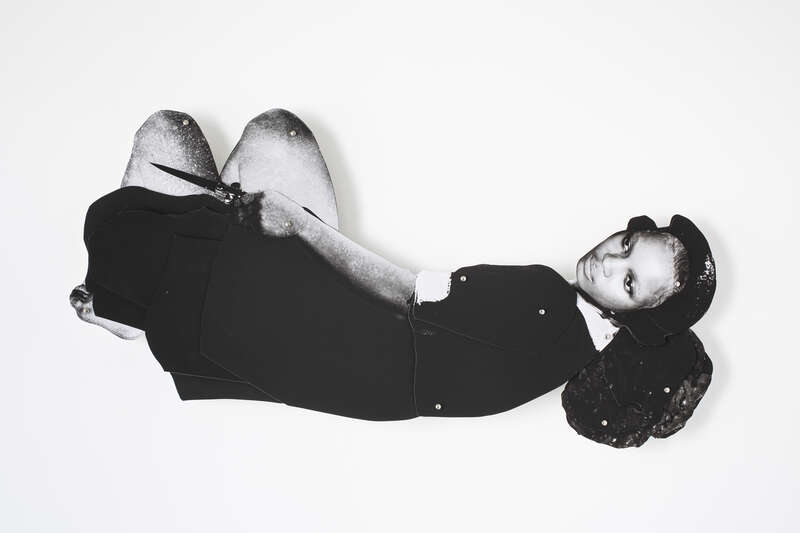
Frida Orupabo, Untitled, 2020. Collage with paper pins mounted on aluminum, 38 x 82 cm. 14 15/16 x 32 4/16 in. Courtesy of the artist and Galerie Nordenhake Berlin/Stockholm/Mexico City. Photo: Matthias Lindner.
Bodies that Glitch: The Black Body and the Digital Archive in Frida Orupabo’s Photographic Work
Since the early beginnings of photography, the relationship between the photographed body and the archive has been a conflicted one. The idea of the passport photo emerged soon after the invention of photography; portraits were taken of imprisoned persons and collected in so-called criminal albums for the identification of repeat offenders.Allan Sekula, ‘Der Körper und das Archiv‘, Diskurse der Fotografie. Fotokritik am Ende des fotografischen Zeitalters, vol. 2, ed. Herta Wolf (Frankfurt/Main, 2003), 269–334. The assumption that a person’s ethical character could be deduced from their facial features was already ominously institutionalised at that time, yet this sensitive debate becomes even more topical in the digital age: as scandals regarding discriminatory technologies have shown, the artificial intelligences developed today in Silicon Valley, Innopolis, and Beijing are anything but objective and neutral. MIT researcher Joy Buolamwini, for example, has uncovered how many varieties of facial recognition software fail to identity the faces of women with dark skin, because they were trained in the learning process using pictures of white men.J. Buolamwini and I. Raji, ‘Actionable Auditing: Investigating the Impact of Publicly Naming Biased Performance Results of Commercial AI Products’. Conference on Artificial Intelligence, Ethics, and Society (2019), https://www.media.mit.edu/publications/actionable-auditing-investigating-the-impact-of-publicly-naming-biased-performance-results-of-commercial-ai-products/. On the other hand, many criminal databases used by governments are trained with pictures of mainly dark-skinned people from economically deprived neighbourhoods.Shoshana Amielle Magnet, When Biometrics Fail: Gender, Race, and the Technology of Identity(Durham and London, 2011), 69–90. This unveils how digital technologies perpetuate and optimise photographically based standardisation methods, which since the nineteenth century have been classifying groups of people according to racist, sexist, and criminal categories based on skin and hair colour, facial features, and so on. How do new digital technologies change the relationship between photography, the body, and the archive? And how could the digital sphere be used as a space of resistance against algorithmic control and surveillance?
Jana Johanna Haeckel
28 apr. 2022 • 8 min
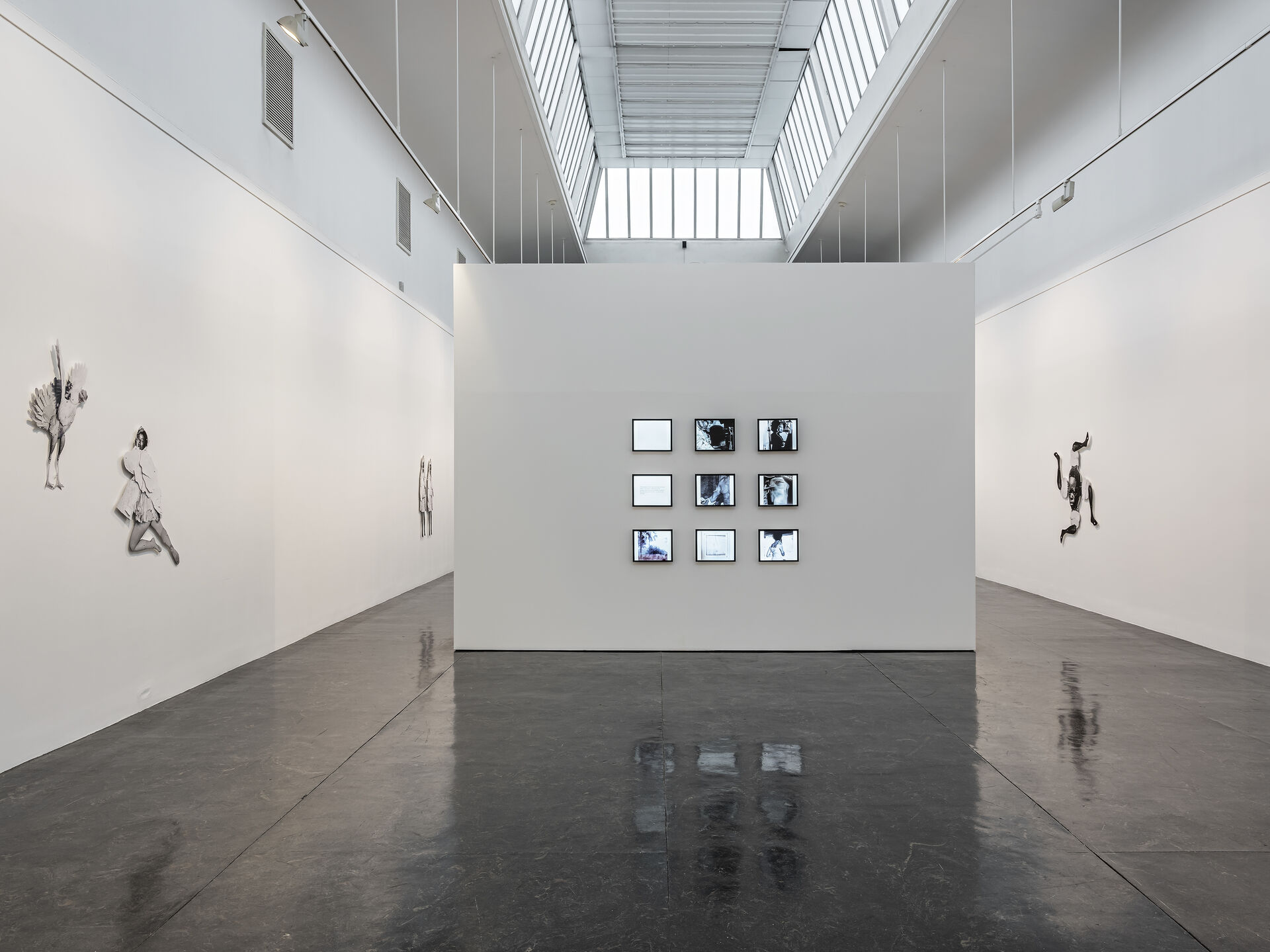
Installation view, Arthur Jafa and Frida Orupabo, Medicine for a Nightmare, Kunstnernes Hus Oslo (01.03.19 – 21.04.19). Courtesy of the artist, Kunstnernes Hus Oslo, and Galerie Nordenhake Berlin/Stockholm/Mexico City. Photo: Vegard Kleven.
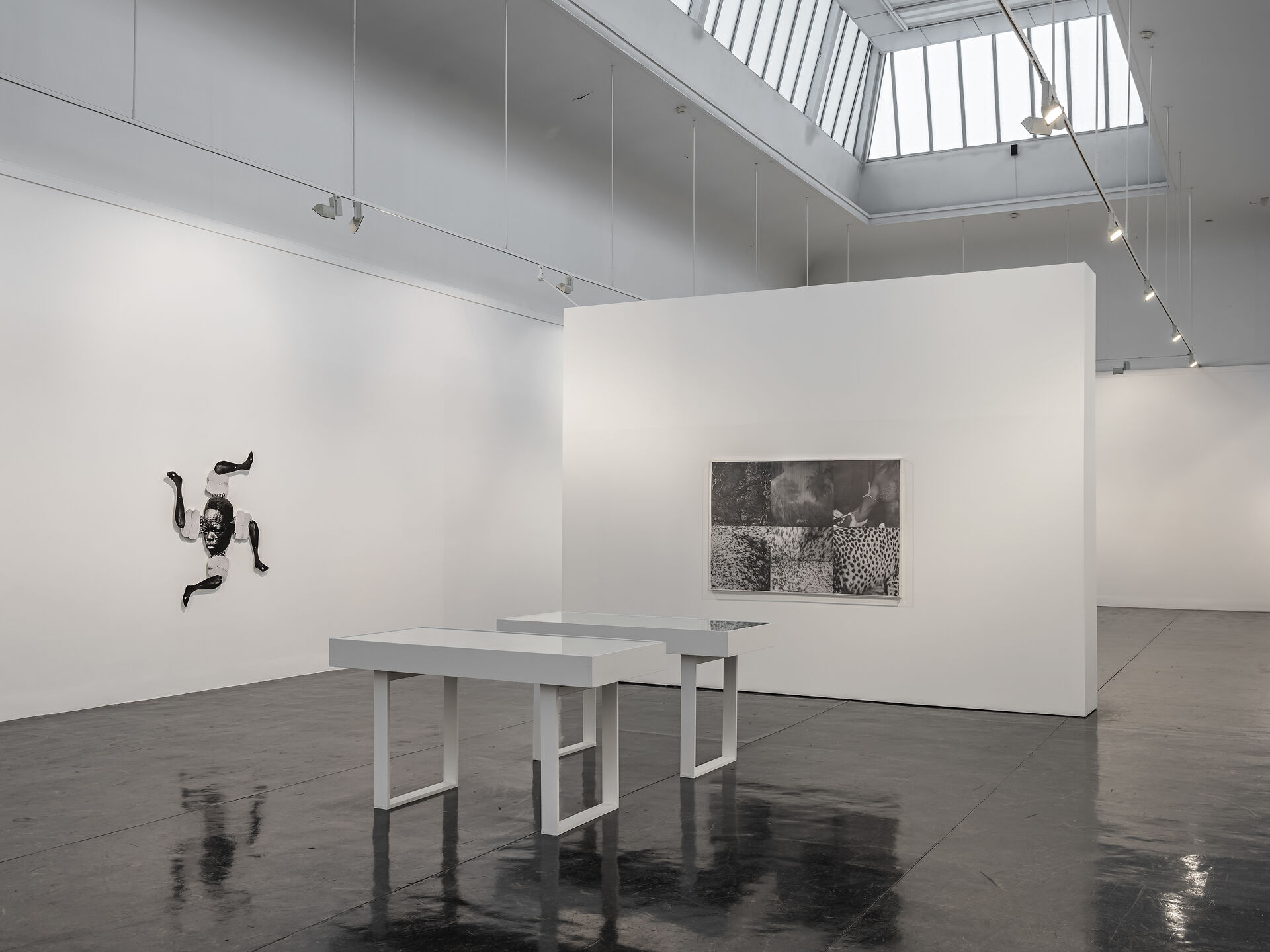
Installation view, Arthur Jafa and Frida Orupabo, Medicine for a Nightmare, Kunstnernes Hus Oslo (01.03.19 – 21.04.19). Courtesy of the artist, Kunstnernes Hus Oslo, and Galerie Nordenhake Berlin/Stockholm/Mexico City. Photo: Vegard Kleven.
Resistant Faces, a group exhibition I curated in 2021 at Pinakothek der Moderne, addressed these urgent questions by introducing eight different artists working on the body and the archive in the digital age.Exhibition details can be found at https://www.pinakothek.de/en/resistantfaces. One of the main observations that motivated my research was the following antagonism: while the tech world celebrates new digital image technologies as ground-breaking and ‘neutral’, contemporary artists remain suspicious of the latest technological developments, especially when it comes to the claim such technologies make to objectivity and truth. The smartphone has made the shooting, accumulation, and distribution of photographs in social networks simpler than ever before. Many young artists today use the possibilities of platforms such as Instagram, the ‘mega-archive’ of digitized images, as a space that has the potential to produce new, real, and meaningful interactions and relations. By offering oppositional orders of dispersive image material, or by inventing new logics that allow them to structure the heterogeneous image material differently, they find ways to subvert traditional archival logics. For them, the point is not a nostalgic return to the safe refuge of the museum – which is impossible as it is – but to keep the discussion about the archive of the future in motion by working on alternative models to it.Jenst Schröter, ‘Archive—Post/photographic’, Media Art Net, July 1, 2021, http://www.medienkunstnetz.de/themes/photo_byte/archive_post_photographic/scroll/. My essay focuses on the particular relationship between the Black body and the archive by considering the work of Frida Orupabo, one of the participating artists in the Resistant Faces exhibition, who engages with the history of photography and its shifting role in the digital age.
Born in 1986 in Norway to a Norwegian mother and a Nigerian father, Orupabo uses reconfigurations of virtual, historical, and personal image material to explore questions of race, gender, sexuality, violence, and identity. An important strategy in her work is the use of digitally archived images that she finds, transfers, and stores on her Instagram account (@nemiepeba). Founded in 2013, Orupabo’s ‘personal’ archive today consists of more than 2,700 photographic images, as well as excerpts from high- and low-culture videos, films, and texts from all different time periods. It provides unsettling insight into the racist bias that has prevailed in looking at the Black body since the invention of photography.
Throughout history, photographic images have often been accused of perpetuating and upholding colonial stereotypes. Photography was not only a witness to and documenter of the colonial regime, but also its tool and accomplice. In the course of colonialism, ethnographic museums in the nineteenth and twentieth centuries collected enormous image archives of portraits of people who did not fall under the heading of white, Western, civil subject. The strictly formalized ‘race portraits’ representing body ‘typologies’ in the field of anthropology were taken under unequal balances of power and used as proof of an alleged European superiority to justify a political relationship of dominance. These condescending, staged strategies are particularly evident in the representation of the Black female body, which is usually portrayed as passive and sexualised and with stereotypical bodily features (as demonstrated, for example, by the violent exhibition of Sarah Baartman, the ‘Hottentot Venus’, in the early 1800s or by the ‘eroticization’ of the career of jazz dancer Josephine Baker).bell hooks, Black Looks: Race and Representation (Boston: South End Press, 1992).
For her paper collages, Orupabo first prints and cuts the found visual material, then makes omissions and reassembles various body parts from different contexts. The resulting fragmented, often genderless beings elude simple categorizations and are mainly kept in black-and-white colourations, referencing the analogue ‘vintage’ aesthetics of historical photographs. One series of collages, exhibited at the Venice Biennale 2019, presents free-floating bodies that resemble (photographic) sculptures more than ‘flat’ paper works. Installed close to the walls, they seem to float and cast significant shadows, enhancing the physicality and fleshiness of their fragmented, deformed figures. Their bodies are connected through their own choreography, located in a space in between. Falling and dancing at once, they stroked me immediately when I saw them for the first time and made it difficult to walk past: while one half-naked, seated figure stared directly and sexually provocatively at the viewers, other faces were kept in a dreamlike state, a highly intimate moment of trance or transition. Their gaze never evokes comfort or companionship but rather opposes the stereotypification of the found image material by unmasking and disrupting their racist origins. Another collage presents the cut-out face of a young woman or boy, surrounded by an oversized aureole made of four legs in the shape of the swastika. The collages take social attributions of gender, class, and ideals of beauty ad absurdum, which is also reflected in Orupabo’s consistently refraining from titling her works.

Installation view, Arthur Jafa and Frida Orupabo, Medicine for a Nightmare, Kunstnernes Hus Oslo (01.03.19 – 21.04.19). Courtesy of the artist, Kunstnernes Hus Oslo, and Galerie Nordenhake Berlin/Stockholm/Mexico City. Photo: Vegard Kleven.
In a conversation I had with Orupabo for a documentary film produced for Resistant Faces, she noted that all her paper collages are based on digital sketches – on files from which the final, ‘physical’ collages are made. According to Orupabo, she invented this digital archive as it allows her to ‘play around and create new narratives by putting images side by side that are usually not meant to be together’. Short, uploaded videos are especially intriguing to her, as they have to meet the time constraints of the platform.Unpublished interview: Frida Orupabo, in discussion with the author, 3 March 2021. The documentary film can be found online at https://www.pinakothek.de/en/resistantfaces. The fragmented scenes of the found footage create a specific intensity that has its own rhythm and narrative logic. Some of these video clips are shown in exhibition contexts next to her paper works. At the Venice Biennale 2019, for example, nine different screens presented various sequences of uploaded image material from Instagram. By making the viewers unsure of the images’ time and reference point, Orupabo challenges traditional concepts of the archive, which is mainly used as a Western system of power and control.
Deeply rooted in its Greek etymology, the word ‘archive’ derives from archon – leader, ruler, governor. Usually seen as an institution embodied in a building, the archive represents state power, ‘objective’ knowledge, and various arbitrary categories of in- and exclusion. According to theorist Ariella Aïsha Azoulay, ‘the archive as the realm of documents handled by experts, in which the governed are occasionally its external and secondary users, is yet another imperial epic. In this fable, the power of the experts to command, produce, and preserve documents is by definition greater than that of the majority of people who were forced to act as archivists and on whose labour the archive relies.’Arielle Aïsha Azoulay, Potential History: Unlearning Imperialism (London/New York: Verso, 2019), 171. These rules are especially valid in the context of colonial image archives, often part of ethnographic museums that mainly give research access to professional and amateur historians.
In our conversation, Orupabo highlighted the importance of ‘engagement with the portraits of the Black subject’ and stated that Black people have historically been made either ‘invisible and delegated to the margins’ or ‘hyper-visible and presented in a stereotyped way’. In this regard, creating portraits offers a way for her to ‘take control, to create and recreate new narratives and identities’.Published interview (i.e., shown in the video): Frida Orupabo, in discussion with the author, 3 March 2021. The film can be found online at https://www.pinakothek.de/en/resistantfaces. By digitally sampling, reworking, and combining biased images, she develops a constructively critical reworking of racist footage. The depicted persons are no longer objects but become the subject of the scene. Her works confront the colonial gaze on the ‘archived Black body’ and develop a personal counter-archive – a strategy that is also famously practiced by the artist and filmmaker Arthur Jafa, who invited Orupabo to exhibit with him in a show at the Serpentine Gallery in 2017.Shama Kanna, ‘Frida Orupabo and Arthur Jafa—Medicine for a Nightmare’, Afterall, 3 July 2019, https://afterall.org/article/frida-orupabo-and-arthur-jafa-medicine-for-a-nightmare. What links Jafa’s work with Orupabo’s is the obsessive collecting and micro-editing of image material of Black bodies as well as the inclusion of the digital sphere.
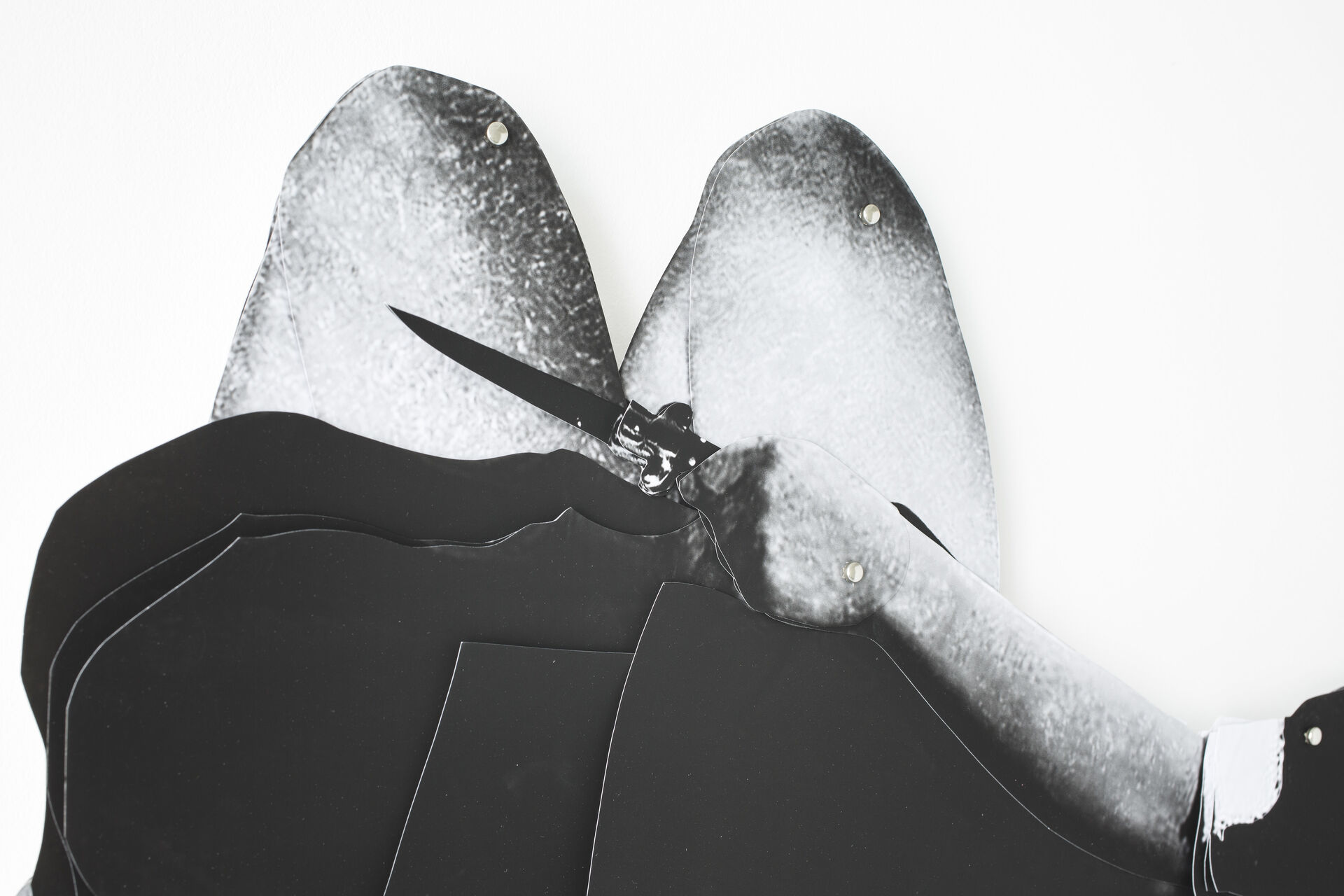
Frida Orupabo, Untitled, 2020. Collage with paper pins mounted on aluminum, 38 x 82 cm. 14 15/16 x 32 4/16 in. Courtesy of the artist and Galerie Nordenhake Berlin/Stockholm/Mexico City. Photo: Matthias Lindner.
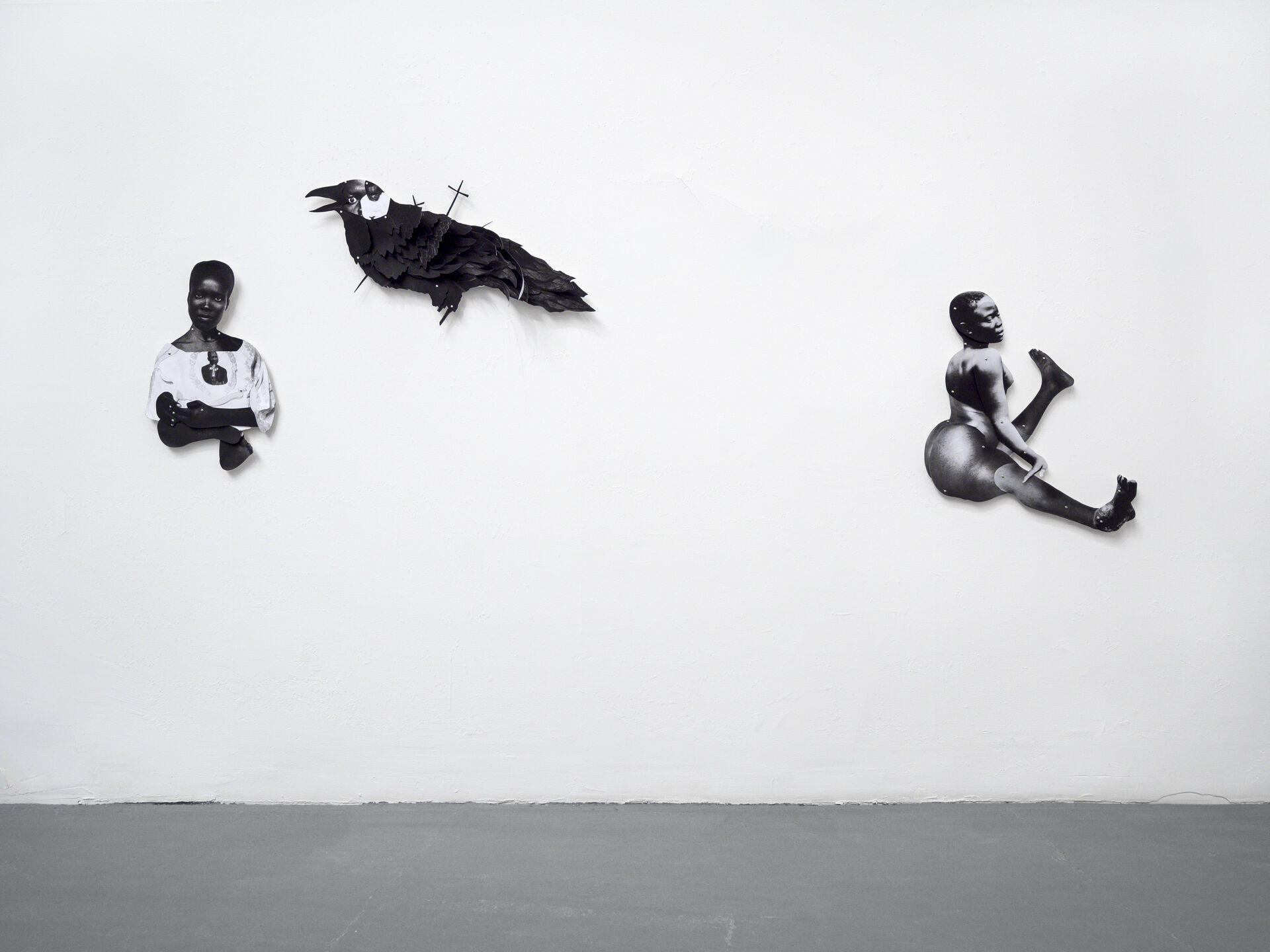
Installation view, Frida Orupabo, May You Live in Interesting Times, Venice Biennale, 2019. Courtesy of the artist, La Biennale di Venezia, and Galerie Nordenhake Berlin/Stockholm/Mexico City. Photo: Francesco Galli.
While artists from the 2000s working with colonial image material, such as Fiona Tan or Tacita Dean, who were famously discussed by Hal Forster in his essay ‘Archival Impulse’,Hal Foster, ‘An Archival Impulse’, October 110 (Autumn 2004): 3–22. focused on non-digital aesthetics and ‘tactile face-to-face experiences’ in the museum space, a new generation of internet artists is including the digital sphere as their predominant ‘exhibition space’ and source of inspiration. These artists show how digital technologies impact our ideas of gender and ethnicity and often stage the body as ‘glitch’ in the sense of the writer Legacy Russell, who argues for a ‘strategic occupation’ of online platforms.Legacy Russell, Glitch Feminism: A Manifesto (London/New York: Verso, 2020). Russell states,
Through the application of the glitch, we ghost on the gendered body and accelerate toward its end…. We want a new framework and for this framework, we want new skin. The digital world provides a potential space where this can play out. Through the digital, we make new worlds and dare to modify our own.Ibid., 25.
Digital photography has long been more than a print on a wall – it has conquered virtual space, becoming dispositive and a complex plot at the same time. By playing with visual material, photographed object/subject, and attribution, Orupabo points to the constructedness of documentary images of the Black body, and transfers them from the virtual mega-archive of the internet to the museum space and back, where they become tangible reality. Deploying the internet and the vernacular of the digital as creative material, she critiques the ‘institution’ of the internet as a discourse intersectional with visual culture and art history. Her work decodes the racist history of photography and operates beyond standard visual codes, exposing and simultaneously undermining their enthralling mechanisms.